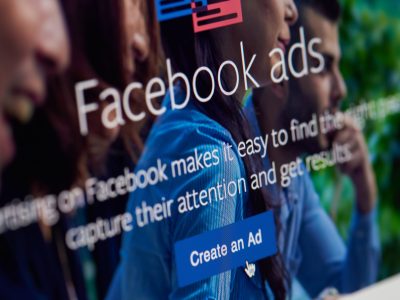“It’s ok Paul, we’ve been doing Boosted Posts for ages now. We Got This”!
A line that usually precedes a quiet moment of marketing despair from me, – and my reply along the lines of “Sooo, you probably aren’t aware that Boosted Posts are a BAD idea”
Facebook-boosted posts remind me of two important lines:
“Just because you can; doesn’t mean you should!” (applicable to life too!)
And
“Beware of ‘improvement recommendations’ from Search and Social Media Companies! (“But the mega super wealthy technology company told us to!”)
Boosted Posts are just one of the main Meta Ad Fails we see from in-house social media activity – so the team at Octave Digital has put together a hit-list of bad practices to avoid.

Boosted Posts: A Superficial Approach
Boosted posts may seem like a great way for businesses to extend their reach on Meta. And that’s not surprising, as Meta very much encourages you to boost posts and make it very easy to do so.
But Boosted posts ads are very much for Facebook’s benefit, and not yours. And it’s designed to increase engagement – which is probably not the main marketing objective you are focussed on generally.
Boosted posts are one of the simplest ways to advertise on Facebook because they don’t require any strategy or effort: you simply choose a post that’s already on your Page, hit the “boost” button, and select a few parameters like audience, budget, and duration. While this may seem like a quick and easy way to increase your post’s reach, it not the most cost-effective or strategic use of your advertising budget.
Meta advertising is competitive. Businesses like yours will be up against 100,000s of other firms and also professional ad agencies – who know how to use Meta Ads effectively.
To achieve strong results – we highly recommend use of Meta Ads Manager and its advanced ad options. Ads Manager allows businesses to create different types of ads, like single image, video, carousel, and more, all with their own sets of creative, targeting, and budgeting parameters.

Worst Meta Ads Practices: Creatives and Testing
- Not Testing Enough Variations: Often, businesses only test one or two creative variants, which doesn’t provide enough data to determine what works best. It’s important to test multiple creative elements, including headlines, images, and calls to action, to identify the most effective combination.
- Ignoring Mobile Optimization: Many users access Meta’s platforms via mobile devices. Ignoring mobile optimization, such as ensuring images and text are clear and legible on smaller screens, can lead to poorer ad performance.
- Using Too Much Text in Images: Meta’s advertising platforms have guidelines on the amount of text that can be used in images. Ads with too much text can have reduced delivery or may not be shown at all. It’s important to balance text with compelling visuals.
- Lack of A/B Testing: A/B testing involves comparing two versions of an ad to see which performs better. Failure to conduct such tests can lead to missed opportunities for improving ad effectiveness.
- Neglecting Ad Relevance: If an ad is not relevant to the audience, it’s unlikely to perform well. Poor targeting can result in low engagement and wasted ad spend.
- Ignoring Ad Fatigue: If you run the same ad for too long, your audience may become “blind” to it, leading to a decrease in engagement over time. It’s important to regularly refresh your ad creatives to prevent ad fatigue.
- Failing to Use High-Quality Images and Videos: Blurry or low-quality visuals can reflect poorly on your brand and decrease the effectiveness of your ads. Always use high-resolution, professional-looking images and videos.
- Not Tracking Performance: Failing to set up proper tracking can make it difficult to measure the effectiveness of your ads and understand which creative elements are working best. Ensure that you have tracking pixels in place and that you’re regularly reviewing your ad performance.
- Ignoring the Power of Video: Video content tends to have higher engagement rates than static images. Failing to incorporate video into your ad strategy can mean missing out on potential engagement and conversions.

Poor Targeting: Missing the Mark
Precise targeting is key to effective advertising on Meta. However, many businesses still make mistakes like targeting demographics that are too broad or too narrow.
Overly broad targeting can lead to wasted ad spend as your ads may be shown to people who have little interest in your product or service – so you’ll be wasting money!
On the other hand, overly narrow targeting might miss out on potential customers.
To target effectively, businesses must understand their audience. Understanding the demographics, interests, and behaviours of the audience is crucial to making the most of this opportunity.
This is one of the key factors that we address at Octave Digital when setting up and managing Meta Ad campaigns.
Campaign Structure: Maximising Efficiency
Many businesses are still running one campaign, one ad set, and one ad, targeting a small demographic and potentially wasting money.
Businesses need to develop a more sophisticated campaign structure when advertising on Meta. This might involve running multiple campaigns with different objectives, each containing several ad sets targeting different audience segments. Within each ad set, businesses should test multiple ads to identify the most effective creative and messaging.

Whether your goal is to drive brand awareness, or boost sales, Octave Digital can provide professional Meta advertising management to achieve your marketing targets.
To find out more about how Meta advertising can help your business, contact Paul McGarrity for a dedicated consultation.
